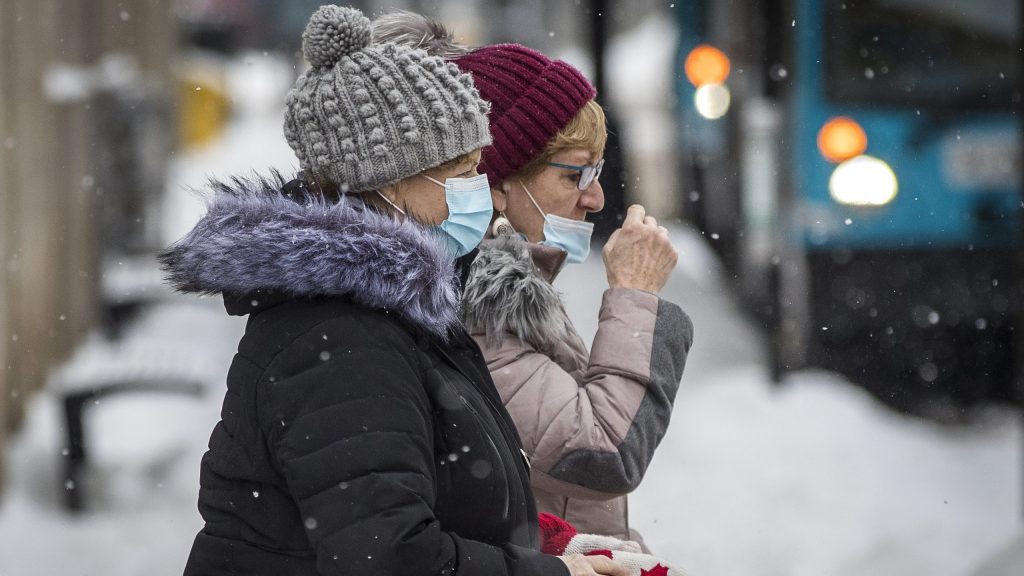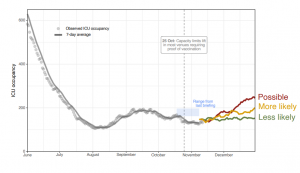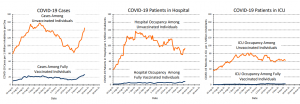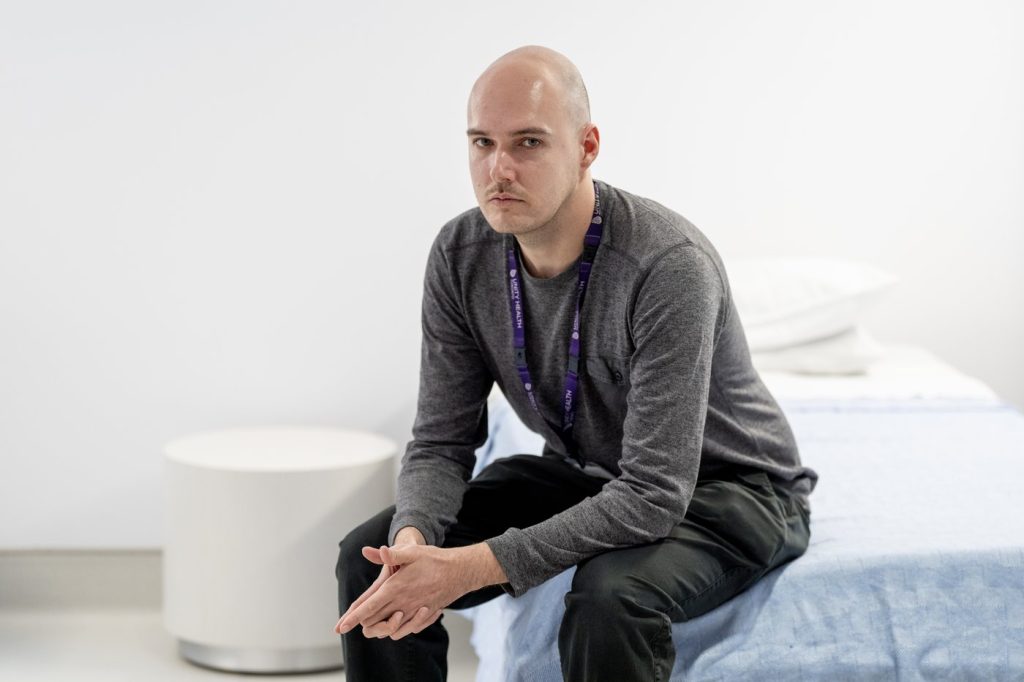Modelling projects continued surge of cases, ICU occupancy to remain relatively low

Posted November 12, 2021 5:20 am.
Last Updated November 12, 2021 5:05 pm.
The panel of scientists advising the Ontario government is predicting that, although COVID-19 cases are on the rise in most public health units, hospital and ICU numbers should remain relatively low throughout the spike.
In the latest pandemic modelling released on Friday, the COVID-19 science advisory table is projecting a weakening correlation between case counts and ICU admissions thanks to the effectiveness of vaccines on more severe cases of the virus.
The panel says that despite hospital numbers remaining stable amid a recent surge in cases — ICU occupancy will start to rise and could reach 250 by the end of the year.
That still leaves the projected ICU numbers well off the number of admissions the province saw during the peak of the second and third waves of the pandemic.
“Even if we have a certain rise, it will not be associated with the same amount of beds occupied in the hospitals as before,” said the table’s scientific director, Dr. Peter Juni. “Because of the absolutely successful vaccine rollout.”
In the most likely scenario, the seven-day average of infections will approach 700 by the end of November. A worst case scenario would see daily case counts approaching 1,000 by the end of the month.

Graphic courtesy of Ontario science advisory table
The panel notes that since the rise in cases is recent, the projections are “unstable and may be conservative.” Dr. Juni tells CityNews that the new modelling only projects case counts until the start of December because they find it very difficult to predict anything beyond that point.
“There is tremendous uncertainty right now,” said Dr. Juni. “It all is quite volatile and if you want to have proof of concept you just need to go to Western Europe.”
Juni cited the Netherlands, who just experienced their highest daily case count since the beginning of the pandemic, though he remains confident that Ontario’s vaccination rate coupled with the continuing of current public health measures will help the province weather the surge of infections.
He says if things were to get worse than expected, further restrictions on capacity limits could just be implemented at a local level since region-hopping is no longer an issue now that most services are open everywhere.
“If the nail salons were open in York but closed in Toronto, people would get their nails done in York,” said Juni. “If you just work with capacity limits, all of that is not necessary anymore.”
Vaccines have played a key role in keeping indicators stable for most of the fall. The panel says unvaccinated people are 26 times more likely to be admitted to the ICU with COVID-19, 11 times more likely of being hospitalized and six times more likely of having any symptoms if infected.
As of Friday, 88.6 per cent of eligible Ontarians have received one dose and 85.4 per cent are fully vaccinated.

Graphic courtesy of Ontario science advisory table
The source of the recent growth in the virus can be attributed to the cooler weather, lifting of capacity limits and people spending more time indoors.
The most recent projections assume all current health measures are continued and there is no further opening. The modelling does take into consideration the Oct. 25 changes to capacity limits.
“It’s not just the vaccine coverage, it’s our overall behaviour,” said Juni. “Denmark has the same vaccine coverage that we do, but they pretended the pandemic was over, and here they are in trouble again.”
The science table continues to recommend policies supporting proper masking and say the recent pause on the province’s reopening plan was the right decision.
“Today’s modelling supports Ontario’s cautious and gradual plan for reopening,” said a spokesperson for Health Minister Christine Elliott. “There’s no question that the months ahead will require continued vigilance, and the modelling rightly points out that some jurisdictions are struggling as they continue to face the fourth wave of COVID-19.”
The table also noted that COVID-19 risk remains higher for lower-income people, minority groups and essential workers.
Dr. Colin Furness, an epidemiologist with the University of Toronto, said the recent rise in cases comes as little surprise given the loosening of restrictions.
“I don’t think there was any doubt, that as we opened capacity at restaurants and at stadiums and telegraphed to the public more than we should have that we were safe, that it would lead to an increase in cases.”
“The pandemic is not over yet,” he warned. “We could still have a very messy time with it. We need to be smart. We don’t need a lockdown. We don’t need to shutter businesses. We need to wear masks. We need to check vax status. We need to avoid large gatherings. It’s fairly simple what needs to be done.”
On Wednesday the province addressed the rising cases by announcing it was halting its plans to lift capacity limits in certain high-risk settings out of “an abundance of caution.”.
The province intended on removing a cap on the number of people permitted in nightclubs, strip clubs, sex clubs and bathhouses next Monday, on Nov.15.
But Chief medical officer of health, Dr. Kieran Moore, said that move will be delayed for at least 28 days as he monitors the COVID-19 case load.
As of Thursday, the seven-day average of new COVID-19 cases sat at 532, compared to 383 a week earlier.
The province reported its highest daily case count in over a month on Thursday, with 642 new cases reported. Another 598 new infections were reported on Friday.
With files from the Canadian Press








